Invited speakers > Plenary speakers
|
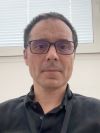
|
Frédéric Banse is a professor of chemistry at Université Paris-Saclay, France. He performed his PhD work under the supervision of Dr Clément Sanchez and Dr François Ribot in Université Pierre et Marie Curie (Paris 6), France, in 1995. He then moved to the Université de Lausanne, Suisse, to work as a postdoctoral researcher. He was appointed as a Maître de Conférences in Université Paris Sud (Paris-Saclay) in 1996 and was promoted as a full Professor in 2010. He is currently leader of the group "bioinspired oxidation catalysts" at the Institut de Chimie Moléculaire et des Matériaux d'Orsay. His major research interests focus on the mechanistic aspects of dioxygen activation for oxygen atom transfer reactions. Special reseearch efforts are dedicated to the rational design of the catalysts by manipulating the first and second coordination spheres of the metal center.
|
|

|
Serena DeBeer is a Professor and Director at the Max Planck Institute for Chemical Energy Conversion in Mülheim an der Ruhr, Germany, an Adjunct Professor in the Department of Chemistry and Chemical Biology at Cornell University, and an honorary faculty member at Ruhr University in Bochum. She received her B.S. in Chemistry at Southwestern University in 1995 and her Ph.D. from Stanford University in 2002. From 2002-2009, she was a staff scientist at the Stanford Synchrotron Radiation Laboratory. Research in the DeBeer group is focused on the development and application of advanced X-ray spectroscopic tools for understanding key mechanisms in biological, homogeneous and heterogeneous catalysis.
|
|
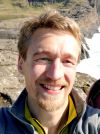
|
Ulrich Hintermair studied Chemistry and Chemical Engineering in Würzburg and Lyon, and gained research experience in St Andrews, Aachen and Yale University before starting his own research group at the University of Bath in 2013. Research in the Hintermair lab revolves around organometallic synthesis and homogeneous catalysis, with a particular focus on mechanistic investigations using operando spectroscopy. In 2016 he established the Dynamic Reaction Monitoring (DReaM) Facility at Bath which develops advanced FlowNMR spectroscopic techniques combined with orthogonal online analytics and applies these to mechanistic problems in complex catalytic systems.
|
|
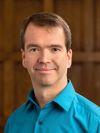
|
Patrick Holland began his chemistry training at Princeton University (A.B. degree in 1993), and received his Ph.D. from the University of California at Berkeley (1997) with Robert Bergman and Richard Andersen. After this focus on organometallic chemistry. Postdoctoral research with William Tolman (University of Minnesota, 1997-2000) introduced him to the world of bioinorganic chemistry, another source of interesting mechanistic questions. Prof. Holland's independent research began at the University of Rochester, focusing on the properties and reactions of three-coordinate complexes of iron and cobalt. Highlights included the reactions of N2, alkyl complexes, imido complexes, and sulfido complexes at low-coordinate iron. Since then, his research group has broadened its studies to nitrogenase mimics, reactive metal-ligand multiple bonds, iron-sulfur clusters, engineered metalloproteins, redox-active ligands, solar H2 production, and spin-state dependence of reactivity. In 2013, Prof. Holland moved to Yale University, where he is now Whitehead Professor of Chemistry. He is the recipient of a number of awards, and was Chair of the 2017 Gordon Research Conference on Inorganic Reaction Mechanisms. Recent research accomplishments include the first preparation of iron-N2 complexes with only carbon and sulfur supporting donors, the isolation of iron-sulfur clusters with three-coordinate iron and nickel sites, mechanistic elucidation of metal-mediated hydrogen atom transfer reactions, and the tandem activation of benzene and N2 followed by coupling to form anilines. Prof. Holland's current research activities include N2 splitting and catalytic ammonia formation using molybdenum-porphyrin complexes, alkali metal cation effects on C–H and N–N activation, mechanisms of alkene hydrofunctionalization at cobalt-salen complexes, and cluster mimics of the iron-nickel-sulfur site of anaerobic carbon monoxide dehydrogenase.
|
|

|
Clark R. Landis is Shain Professor and Chair of the Department of Chemistry at the University of Wisconsin-Madison. His PhD (1983, University of Chicago) thesis concerned the mechanism of asymmetric hydrogenation and was performed under the mentorship of the late Jack Halpern. Career stops include research chemist in the Corporate Research Lab of Monsanto Company (1983-1986), assistant professor at the University of Colorado, Boulder (1986-1990), and assistant, associate, and full professor at the University of Wisconsin (1990-present).
Clark’s current research interests include mechanistic studies of industrial, catalytic processes such as alkene polymerization and hydroformylation, the development of novel instrumentation (high pressure NMR, stopped-flow NMR, and quenched flow reactors), computational chemistry, and localized bonding theory. Recently his group has demonstrated the application of operando, high pressure NMR to create detailed, microkinetic models of enantioselective hydroformylation. Another recent focus is creation of the chromophore quench-label technique for time-resolved active site counting. This technique enables practical determination of high quality kinetic models of metal-catalzed alkene polymerization. With Frank Weinhold he coauthored the books Valency and Bonding (Cambridge) and Discovering Chemistry with NBOs (Wiley).
His awards include the Galler Award for Most Distinguished Thesis in the Physical Sciences at the University of Chicago (1983), Dreyfus Distinguished New Faculty Award (1986), American Chemical Society Award in Organometallic Chemistry (2010), and the University of Wisconsin Chancellor’s Distinguished Teaching Award (2005). He is a fellow of the Japan Society for the Promotion of Science (2006), the American Association of Arts and Sciences (2008), and the American Chemical Society (2010). Lectureships include the Chini Lectureship of the Italian Chemical Society (2018), Alan Davison Lecturer at MIT (2015), G. F. Michl Lecturer, CU-Boulder (2015), Dow Lecturer in Inorganic Chemistry, UC-Berkeley (2007).
|
|
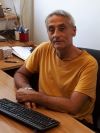
|
Manuel Martínez is the head of the Mecanismes de Reacció en Química Inorgànica group at the Universitat de Barcelona, which has an international projection of kinetico-mechanistic studies from an empirical perspective. The group is one of the promotors of the European Colloquium on Inorganic Reaction Mechanisms, which represents an effort to bring together the research groups involved in the area at the European level.
The group's general research line is based on the adjustment of the reactivity of inorganic compounds via the fine-tuning of the reaction mechanisms. In this respect, some contributions in the following relevant areas have allowed the approach of the group towards its general goal:
- Kinetico-mechanistic studies on activation processes of C-X bonds by PtII and PdII complexes.
- Study of formation processes and redox behaviour of mixed-valence FeII/CoIII compounds with macrocyclic and bridging ligands having adjustable electronic properties.
- Study of the steric and electronic influence on the substitution processes in organometallic compounds.
- Kinetico-mechanistic study of the self-assembly of polymetallic supramolecular architectures containing different functionalities.
- Study of the substitution mechanisms on complexes of CoIII and RuII with biologically relevant, nucleobase-derived ligands.
Clearly, the group is involved in highly multidisciplinary research lines, a fact that is specifically suited for future developments.
In addition to the per se academic interest of these studies, it is obvious than a better knowledge of the mechanisms operating in a reaction has to lead to the general optimization of the processes. The group's general research project is based on, and intends to, an increase of the mechanistic information available on previously known reactions, as well as on some new processes specifically designed for this purpose.
|
|
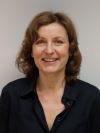
|
Jana Roithová graduated from Charles University in the Czech Republic (1998). Her Ph.D. thesis focused on reaction dynamics (2003), and she learned mass spectrometry techniques with Prof. Schwarz (Berlin). From 2007 to 2018, she was a lecturer and then a professor at Charles University. Since 2018, she has held a chair in spectroscopy and catalysis at Radboud University in the Netherlands. She develops techniques to study reaction mechanisms, focusing on reactive intermediates in metal-catalyzed reactions. Her research interests span from reaction mechanisms of organometallic reactions and mechanisms of small molecule activation to new reactivity concepts and reaction design. She is a member of the Royal Netherlands Academy of Arts and Sciences and received several prizes, e.g., the Ignaz L Lieben Award from the Austrian Academy of Sciences or the Rudolf Lukeš prize from the Czech Chemical Society.
|
|


